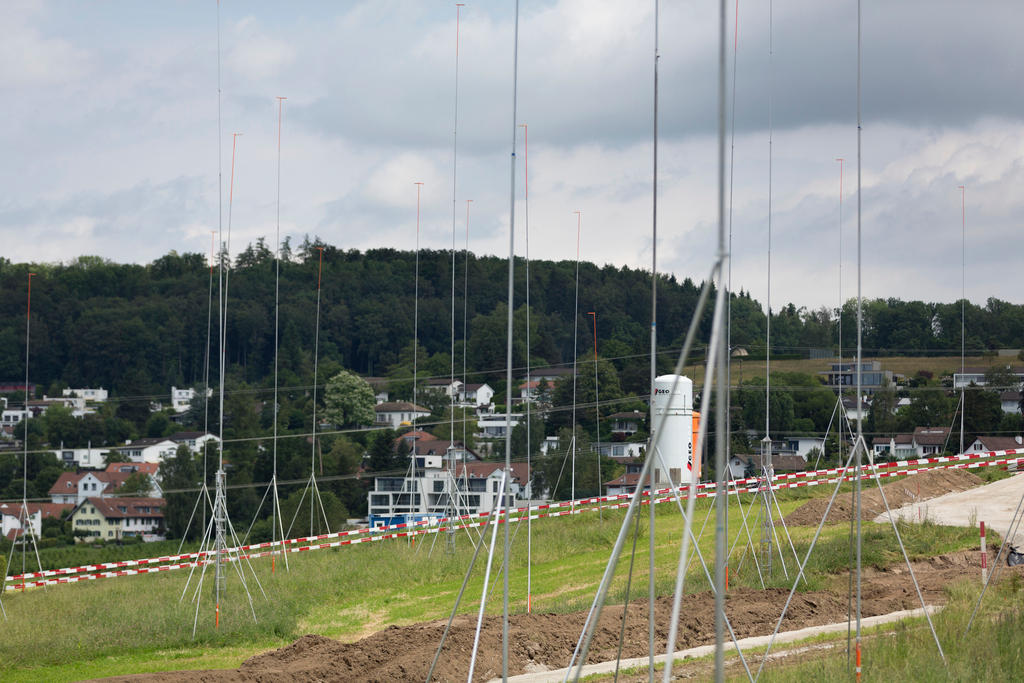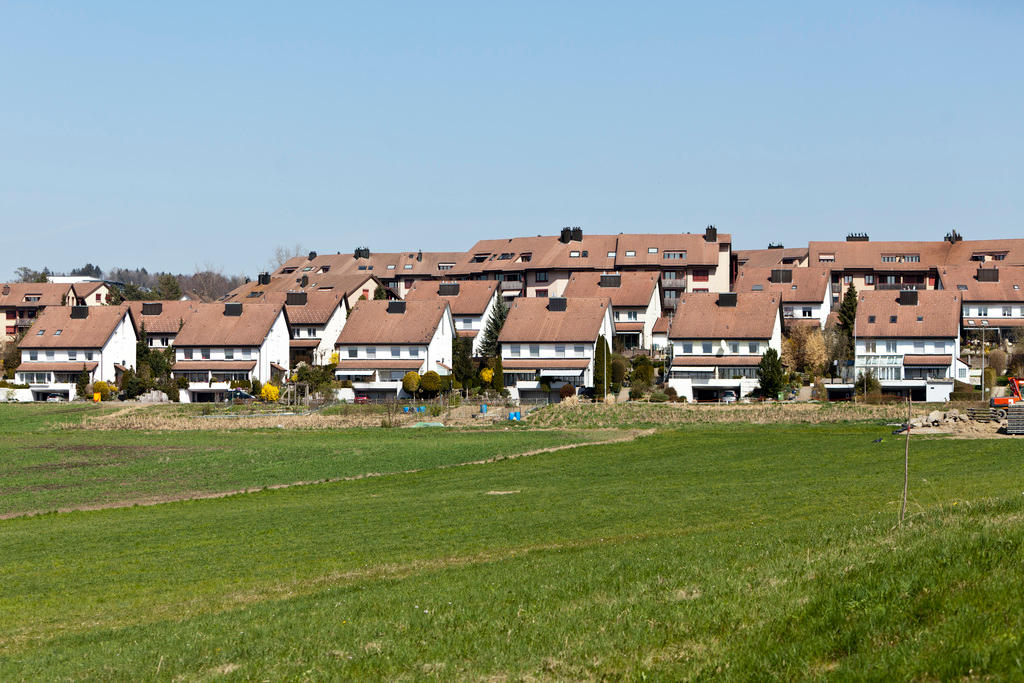
Swiss voters asked to decide on urban sprawl

As urban development continues apace, should a freeze be placed on the creation of new construction zones? Such is the proposal of a people's initiative put forward by the youth chapter of the Green Party to be voted on by the Swiss on February 10.
For opponents, the initiative is too radical, and the recently revised Planning Act is more than adequate to reasonably manage urban development.
Is Switzerland covered with too much concrete and asphalt? Officially, 7.5% of the country is covered by buildings, roads or other human-built infrastructure. But the figures, which date to 2009 and are the most recent available, do not tell the entire story. Even though each year a surface area equal to the size of Basel disappears underneath concrete, Switzerland is not comparable to countries like the Netherlands or Belgium, where 37% and 25% of the surface area, respectively, is occupied by buildings, railways or roads. Neighbouring countries also have greater proportions of urbanisation – ranging from 10-14% – and Switzerland is still more than three points below the European Union average of 11%.
However, these figures encompass everything that humans have ‘taken’ from the fields, prairies and forests. But do houses, gardens, public parks, cemeteries or football fields count as constructions? If the answer is no and we consider only the surfaces made impermeable by concrete and bitumen, Switzerland has ‘consumed’ just 4.7% of its surface area. This is again less than the Netherlands (13%), Belgium (10%), Germany and Italy (7%), France and Austria (5%), but a little higher than the EU average (4%).
And there’s the rub; the topography of Switzerland is not comparable to that of the European champions of construction or to the population density that goes with them. If in Belgium and Holland development can sprawl over the entirety of a territory which is almost totally flat, Switzerland’s mountains make almost 70% of the country inhabitable. This means that any reading of the official figures should keep in mind that developments here are concentrated in one third of the total surface area of the country. In fact, on the Swiss midlands, urban constructions cover 16% of the surface area.
For the Young Greens, we have reached breaking point, and the map of the midlands – the region between the Alps and the Jura hills – now resembles a moth-bitten cloth thanks to the sprawl of construction developments. In October 2016, having garnered more than 113,000 valid signatures, they submitted a popular initiative to the Federal Chancellery to “Stop the Sprawl – for sustainable development in construction”.
Supported by several environmental organisations, the Small Farmers Association and the Young Socialists, the Young Greens want to write the restriction of all building zone extensions with no time limitation into the Swiss constitution. Exceptions could be agreed for agriculture or public use, but only on condition that an equivalent building zone is declassified and returned to its natural state. The initiative also wants to promote the densification of urban areas and sustainable habitats.
The proposed freeze on building zones is a radical measure which has crystallised the opposition. The initiative’s authors say it “shows the way forward to a more moderate use of the land”, and that it will help to “preserve the Swiss landscape and, in fact, our quality of life”. For them, construction zones are already outsized, leading to more traffic, more roads and more wasted areas.
To the argument that the initiative could lead to a housing shortage if new homes cannot be built, the Young Greens say we must densify the current built-up areas, as well as build on industrial brownfields. These new “sustainable” areas should be mixed-use, offering workplaces close to housing and social activities. Such areas would also free developers from the obligation to build too many parking spaces given that today in Switzerland’s major cities, more than one in two households does not have a car.
Construction evolution in Switzerland – “travel through time” with Swisstopo
Find an area on the map, and, by sliding the “curtain” right and left, see its evolution over time between present day (in green) and the 1980s (in black and white).
Some of the main political parties still have to define their positions for the vote on February 10, but a general rejection of the initiative is likely. In parliament, the initiative was supported only by the Greens and half the Social Democrats, with the other half abstaining. The government is calling for it to be rejected. For outgoing Environment Minister Doris Leuthard, the text is “too radical, unfair and counterproductive. It does not serve the cause of our country,” as she said in December.
According to Leuthard, the current law, which was revised in 2013 and is currently being re-revised, is sufficient to ensure correct use of the territory.
Contrary to the Young Greens, who want a permanent freeze on new buildings zones, the Planning Act calls for building zones to fulfil the predicable needs of the population for the coming 15 years, an aim which Leuthard says is more realistic. The freeze demanded by the initiative would penalise the cantons and communes which have already planned their constructions zones with restraint. On the other hand, those which have planned large constructible surfaces will benefit unfairly. “The initiative does not take into account regional differences: Nyon is not Arosa,” the minister argued.
As for urban densification, Leuthard noted that several towns and communes already practise the policy; Aarau, capital of canton Aargau, is one example among many.
In less diplomatic language, a centre-right committee against the initiative recently made its feelings known. It argues that the text is “superfluous and harmful”, the effect of which would be to “fossilise” Switzerland. Uniting the Association of Small and Medium Enterprises and the four parties on the right and centre right – the Swiss People’s Party, the Radical Party, the Christian Democratic Party and the Conservative Democratic Party – the committee agrees with the government, arguing that the Planning Act already covers the fundamental demand for a reasonable management of the territory. It says the initiative threatens the creation of wealth and workplaces because it will lead to increased rents and kill off any hope of the middle class of owning property.
Despite the arguments for and against, there is no clear winner in the offing. It is also worth remembering that in 2012, the Franz Weber initiative aimed at restricting new constructions by limiting the building of secondary residences, passed to general surprise by a slim majority of 50.6% of votes.

More
Green initiative gets early support, but not enough to win vote
Translated from French by Sophie Douez

In compliance with the JTI standards
More: SWI swissinfo.ch certified by the Journalism Trust Initiative






























You can find an overview of ongoing debates with our journalists here . Please join us!
If you want to start a conversation about a topic raised in this article or want to report factual errors, email us at english@swissinfo.ch.